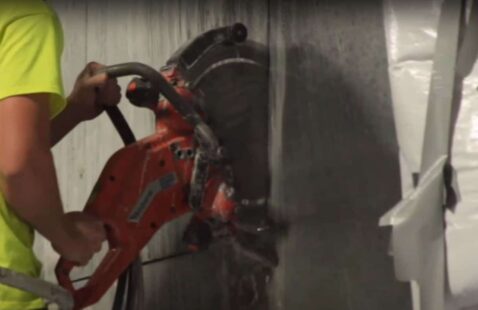How Does a Wall Saw Work?
Wall sawing is a precise method used to cut vertical concrete surfaces, essential for renovations and structural projects, with depth…
Read MoreWhat is 6000 psi concrete used for and common cutting methods.
Cutting 6000 PSI concrete requires specialized techniques and equipment, with New Zealand experts often using water jet cutting and diamond…
Read MoreHow long does a typical core drilling process take?
Core drilling is a precise method to create clean, circular holes in concrete, influenced by factors like concrete thickness and…
Read MoreWhat is the composition of asphalt?
Asphalt is a versatile and durable material primarily composed of aggregates and binders, with various types tailored for specific needs,…
Read MoreWhat Safety Gear is Essential When Cutting Concrete? A Deep Dive into Safe Practices
Safety gear is vital in concrete cutting to protect against health risks, and while there are various cutting techniques and…
Read MoreCommon Mistakes in Concrete Cutting: Tips from Auckland Experts
Navigating common concrete cutting mistakes requires understanding the pitfalls, from equipment mishaps to environmental challenges, and knowing how to rectify…
Read MoreIs There a Difference Between Cutting Wet and Dry Concrete with an Angle Grinder?
Wet and dry concrete cutting with an angle grinder offer distinct advantages and challenges, but for best results and safety…
Read MoreDoes Carbide Cut Concrete? Insights from Auckland's Concrete Cutting Scene
Carbide can cut concrete, but its effectiveness varies based on the concrete's type and age, and while there are health…
Read MoreWhat is 5000 psi Concrete Used For? Deep Dive into High-Strength Concrete
5000 psi concrete is a high-strength, durable material primarily used in heavy-duty applications, requiring specialized tools for cutting and offering…
Read MoreCan I Use an Angle Grinder to Cut Concrete? An Auckland Concrete Cutters Expert Insight
Angle grinders can cut concrete with the right diamond-tipped blade, but safety concerns, depth limitations, and the presence of reinforcements…
Read More









